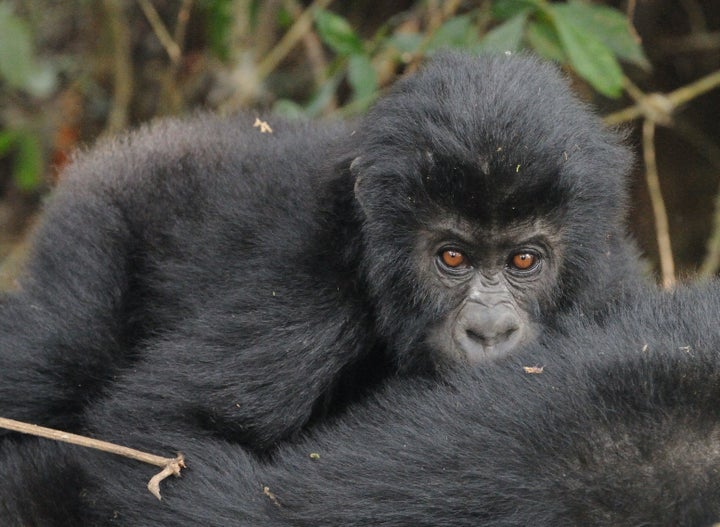
Fewer than 3,800 Grauer's gorillas remain in the wild. That's a 77 percent decline in population numbers of the largest gorilla subspecies group in 20 years, according to a new report released this week.
Researchers from the Wildlife Conservation Society and Fauna & Flora International note in the study that the rapid fall in population numbers should place the Grauer's subspecies on the International Union for Conservation of Nature's “critically endangered” list. If that happens, all four gorilla subspecies would be on the critical list, categorized as facing a very high risk of extinction in the wild.
The sharp drop in population can be directly attributed to humans. The report notes a series of conflicts in Central Africa, such as the Rwandan genocide in 1994 and later civil war in the Democratic Republic of Congo, has forced many people to work for artisanal mining enterprises deep in jungles where they hunt for food.
"Most of these mining camps rely on access to bushmeat for the miners to survive," the authors write. "Great apes are among the more highly prized species because of their relatively large size."
The authors found evidence of bushmeat hunting at nearly every mine site they surveyed, with miners "openly stating that they consumed" the animals indiscriminately, regardless of conservation status.

The Grauer's gorilla lives solely in eastern DRC and can weigh up to 400 pounds. In 1995, populations numbered upwards of 17,000 individuals. Many of the remaining animals now live in just a few national parks and reserves critical to their survival. However, bushmeat hunting still takes place and human conflict around the trade has escalated.
The WCS notes armed rebels killed a guard was at the end of March near Kahuzi Biega National Park, the only area where gorilla populations were actually on the rise.
Radar Nishuli, the park's chief warden, joined the study's authors in urging for further training of rangers and the close monitoring of gorilla families to help prevent future poaching.
Gorillas are just one of many emblematic African species facing extinction.
The eastern chimpanzee's population has plummeted at least 22 percent. Some 35,000 elephants are killed on the continent every year and a record 1,338 rhinos were poached in 2015. African lions were recently given endangered species protection, and lesser known creatures like the pangolin are among the most trafficked animals on the planet.
But the scourge of hunting is an expensive battle to wage, and many illegal poachers -- both for bushmeat and trophies -- are heavily armed.
Andrew Plumptre, the study's lead author, told The Guardian there has been some government intervention, including the use of the DRC's army to chase out armed groups. But talks to create a "green beret" force to defend the animals are still in the works.
